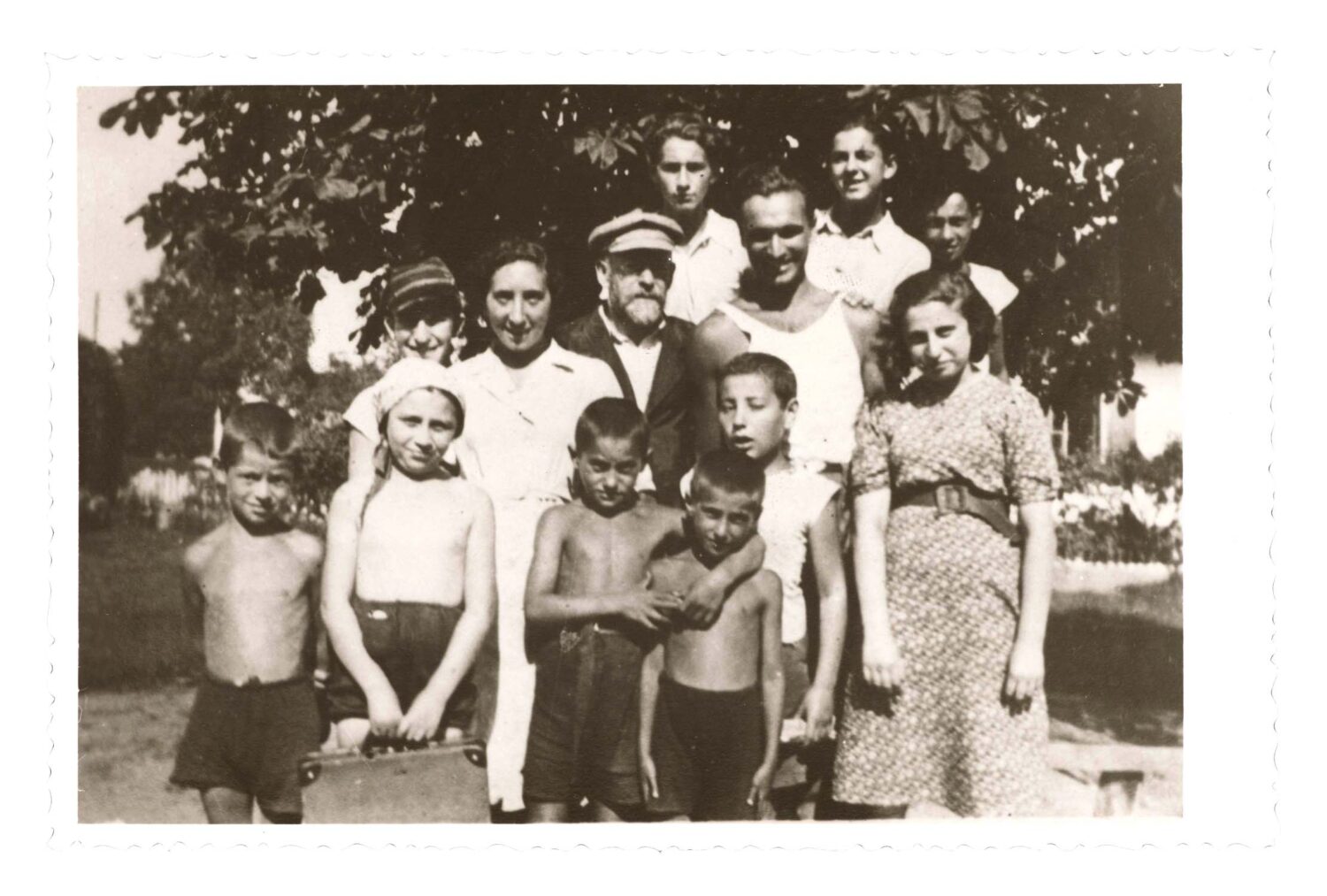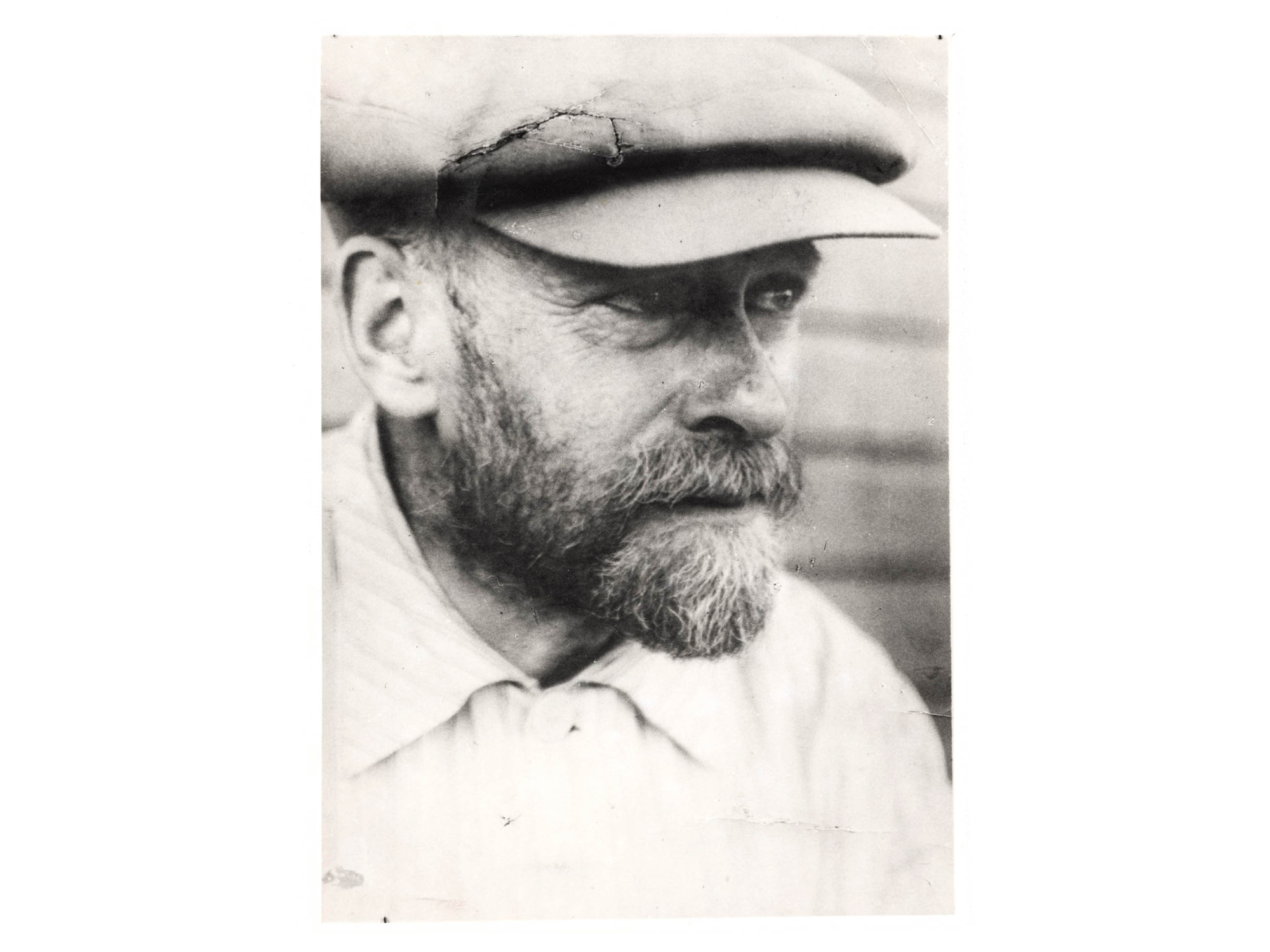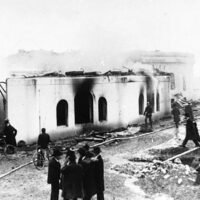Janusz Korczak was a doctor who came to the conclusion: if I want to do something substantial for the health of children and young people, then I have to live with children and shape their lives. Thus the doctor, author and poet turned into an educator. Yet his work and life are elusive to a certain extent. They unfold in another world, a higher world of which he was a witness. He was not the creator of a system of education, a systematist or academic. He was an educator.
It is the 30th of November 1940, the last day for the Jewish people in Warsaw to enter the ghetto. Four hundred thousand people had just six weeks to move to this district. Less than three per cent of the city’s area was supposed to house a third of the population of this large city. The war was raging, and amidst the great hardship people were very surprised to see a column of children, as if in a procession. Almost 170 children passed by: beautifully and colourfully dressed, with lanterns, with beautifully painted pictures, with cages, with birds, singing, reciting, joyful. They were led by a small, grey, also somewhat bald man: Janusz Korczak, using his proper name, Henryk Goldszmit. He led the procession from Krochmalna Street, where the Jewish children’s home was – which he had managed and built up over decades – to Chłodna Street. The many children had to leave their beautiful home and move into the inadequate, unsuitable premises of a former school of commerce. For Korczak, it was important that this moment, as difficult as it was, should be beautiful and joyful for the children.
How do we create such an attitude, a mood in which we don’t let circumstances grind us down? This was a maxim for Janusz Korczak. He had previously written petitions and had spoken to many people in order to keep his home going, but that had not worked. Then, he put all his efforts into beautifying the school of commerce building that had been assigned to him, with flower pots in the windows, with beautiful carpets, with pictures. The procession of 170 children and a few adults was accompanied by lorries carrying food, tableware, clothes, and suitcases. As they passed through one of the eight gates to the ghetto, they were stopped and a lorry was commandeered by a German soldier. Korczak was angry and argued with the soldier. An officer arrived. They spoke. «What’s your problem? They are just Jewish children, after all. Why are you sticking up for them?» «Well, I am an educator of these children.» «You’re not Jewish as well, are you?» «Yes.» «Where is your armband?» He rejected the armband and never wore it. «But the regulation says you have to.» And then Korczak said: «There are human laws that are transient and higher laws that are eternal.» As a result he was beaten up and sent to prison. His release was only achieved through the payment of bail.

Thank You, Creator
If we look at the life of Janusz Korczak, we see four wars that he lived through. Actively as a soldier and a military doctor: the Russo-Japanese War, when the Polish population had to fight on the Russian side; then the First World War, again on Russia’s side; then the Polish-Soviet War during which he again spent two years at the front; and the Second World War in which he wanted to fight but was not allowed to. He experienced two revolutions and spent several periods in prison – a pretty tough life. A century full of wars, and in the midst of it all, he developed his educational work.
His guiding maxim was to create an environment fit for human beings in which children could grow up. We can ask about the source of the joy that enabled him to develop his work despite adverse circumstances. One of his books was called: ‹Allein mit Gott. Gebete eines Menschen, der nicht betet› (Alone with God. Prayers of a Person Who Does Not Pray). That sounds religious and perhaps denominational – the term religious applies, denominational does not apply at all. He was an absolute free thinker and did not belong to any religious community. Nevertheless, he was a deeply spiritual, deeply religious person.

The booklet was written in 1922, during a major biographical crisis. The Polish-Bolshevik or Polish-Soviet war had just ended. Korczak was appointed as a military doctor in an infectious disease hospital, where he contracted typhoid fever. He returned home to his elderly mother, who then cared for him, but his mother also caught it. She died a few days later. Korczak only heard about it a few days after her death, and it drove him close to suicide. The 18 prayers that emerged at that moment evidently helped him to come to terms with it. In the ‹Prayer of an Artist› he writes: «Thank you, Creator, for creating the pig, the elephant with its long trunk, that you frayed leaves and hearts, gave black faces to Africans and sweetness to sugar beet. Thank you for the nightingale and for the bug. For a girl having breasts. That the air takes the breath away from the fish. That lightning exists, and cherries. That you have caused us to come into the world in an inexpressibly wonderful way. That you have made the human being so stupid that they think there is no other way. That you have given a thought to the stones, to the sea, to human beings.»
A typically enigmatic statement from Janusz Korczak. A huge joy, a huge interest in creation, in nature comes to expression here. God is not somewhere, he is everywhere. In me, in the stone, in the plant, in the animal. In the child, in the stars. God is everywhere. By seeking him in the other beings, I also find myself, him in myself. I am connected to the world in this divine substance. Perhaps this is also something that connects him with the Hasidic, Eastern Jewish mindset. There is a joy in the little things of everyday life. Korczak never discussed his sources, for example Hasidism, but he obviously lived out of this spirit.

A second element is found in his main educational work, which is translated as: ‹How to Love a Child›, a fascinating book written in the trenches of the First World War. Korczak was already working as an educator and survived this terrible time by writing. He opens the book with the confession that he actually knows nothing. The book was intended only for those seeking questions and suggestions for questions. In three lines he elaborates: «I want to teach: to understand and love the wonderful, creative ‹I don’t know› of modern science, filled with life and fascinating surprises, as it relates to the child.» In education, we have to learn about and love the ‹I don’t know›. Both those working in Waldorf education and those otherwise active in anthroposophy should take this very much to heart. Waldorf education is still too often experienced as an education of answers, of ‹we have all the answers›.
What is so special about ‹I don’t know›? It sounds so easy, as if it were something for which I don’t have to do much. But in reality, it is a completely creative activity. I have to endure questions, I interrogate reality and live with and work on questions. For Korczak, it was this state of mind that opened up creation for him, and especially children. As early as the period between 1907 to 1909, he lived together with children in summer camps. During this time, he writes to a friend that he had 20 new children to decipher something like 20 books written in a half-known language. The children are riddles for him. This connects him very much with Rudolf Steiner. Steiner said: «What is the textbook from which we have to learn, where we have to learn education? It is the children themselves.» Both had the attitude of not knowing what the solution to the riddle was. But by reading the book of the child, we ourselves mature. This is the second source that is associated with this joy in creation.
Not Everyone is a Scoundrel
There are other inner bridges between Steiner’s and Korczak’s educational impulses. However, Korczak was very discreet with his findings. «You cannot trumpet every truth», he once remarked in a conversation. He was a true master of the word, and part of that was that he could also remain silent. It is striking that Korczak also thought in terms of seven year periods. For him, the seventh years were a key to the qualitative transformations of a human being. In his orphanages there were only children between the ages of seven and fourteen. His work is somewhat comparable to the teaching methods of the class teacher. His main educational tools are revealing. First spending time in nature, living with plants and animals. Then stories, which he expertly told, but also wrote himself for the children. He was much better known in his time as a children’s book author than as an educator. Thirdly, he was a master of sympathetic observation. He wrote about, or described, an incredible amount of what he observed. There were boxes of notebooks in which he quite systematically recorded notes and observations and even measurements.

He had two major topics on which he had actually planned the works of his life. One is about the growth of the child, and the other is about sleep. His role model was Henri Fabre, the French entomologist, an insect researcher. Korczak describes him in his main educational work: «The brilliant French entomologist Fabre boasted that he had made his epoch-making observations on insects without killing a single one. He investigated their flight, their habits, worries and joys. He watched them attentively as they enjoyed themselves in the rays of the sun, as they fought with each other and perished in doing so, as they searched for food, built shelters and stored up supplies. It was never too much for him. With a shrewd gaze he followed the powerful laws of nature in their barely perceptible vibrations. He was a primary school teacher, investigating with the naked eye.» And then: «Educator, be a Fabre of the world of children. Observe, observe, observe for hours.» His method of cognition could be described like this: standing in front of the world of phenomena so that this world of phenomena, for example also children, become like gateways to a higher world and reality. To touch this surface, to let it work on me, to let it resonate within me, to hear the language of the phenomena. Thus, this higher reality which lives in the world, which exists in the world, comes to life within. Here Korczak practised in his own way what Steiner describes in his book ‹Von Seelenrätseln› [previously published in English as ‹Riddles of Philosophy›] as liminal places of cognition.
In this way, the human biography becomes permeable on both sides: on the side of birth and on the side of death. On the birth side, he describes this emergence of transparency in his main work: «I care for these children with my gaze, with my thoughts and the question: who are you? Wonderful mystery. And what does it hold within you? I kiss them the way an astronomer kisses a star. That was. That is. And that will be. This kiss should hold the middle ground between the ecstasy of the scholar and a humble prayer.» The child like a star. That was and is and will be. A star in every child. On the other side of death, the last lines of the dedication to his parents from his book ‹Allein mit Gott› (Alone with God) add: «I thank you for teaching me: to hear the whispers of the dead and the living. I thank you that I will recognise the mystery of life in the beautiful hour of death. Your Son.»
We know how Korczak’s own moment of death approached on the 5th of August 1942, 20 years later. He, some staff members and the 200 children from the orphanage were transferred to the Treblinka extermination camp. At the Danzig [Gdansk] railway station, they boarded the train together. The German commandant recognised Korczak as the author of children’s books and offered him the chance to leave the train. «And the children?», Korczak asked. «The children are going, but you can stay here.» «You are wrong, not everyone is a scoundrel,» was Korczak’s reply and he slammed the wagon door shut. Palestine, too, would previously have been a safe haven for him. A room had already been sought for him in Jerusalem and yet he abandoned the idea because he could not bring himself to leave his children behind. In one of the last letters to his friends in Palestine, he wrote something very special: «This may not be entirely understandable, but I believe that if I do not come to you as an old, tired, tormented man to share the rest of my strength with you, I will come to you again as a child.» He already saw himself in his next life on earth as a child starting their life anew with these people in Palestine.
From this year’s Goetheanum lecture series ‹Voices of an Education Fit for Human Beings in the 20th Century›.
See more at goetheanum.tv
Translation Christian von Arnim






Such a profound story. It will linger with me for a long time! Thank you.
so viele Strapazen aus dieser traumatischen zeit, langsam kommen sie alle wider kurz an dem menschlichen blick und wir besichtigen sie wie ‘alter wind’ aus einer anderen zeit, aber das aller grausame in unserer Menschheit muss irgendwie alles wieder ans licht der heutigen Bewusstheit kommen damit wir uber diese furchtbaren Tätigkeiten voraus kommen um unserem neuen kinder ihre Lebendigkeit nochmal möglich machen, ja so zolt ihr alle wider leben. Die gesamte mencheit die jetzt lebt ist die gesamte Menschheit die je am leben wahr.